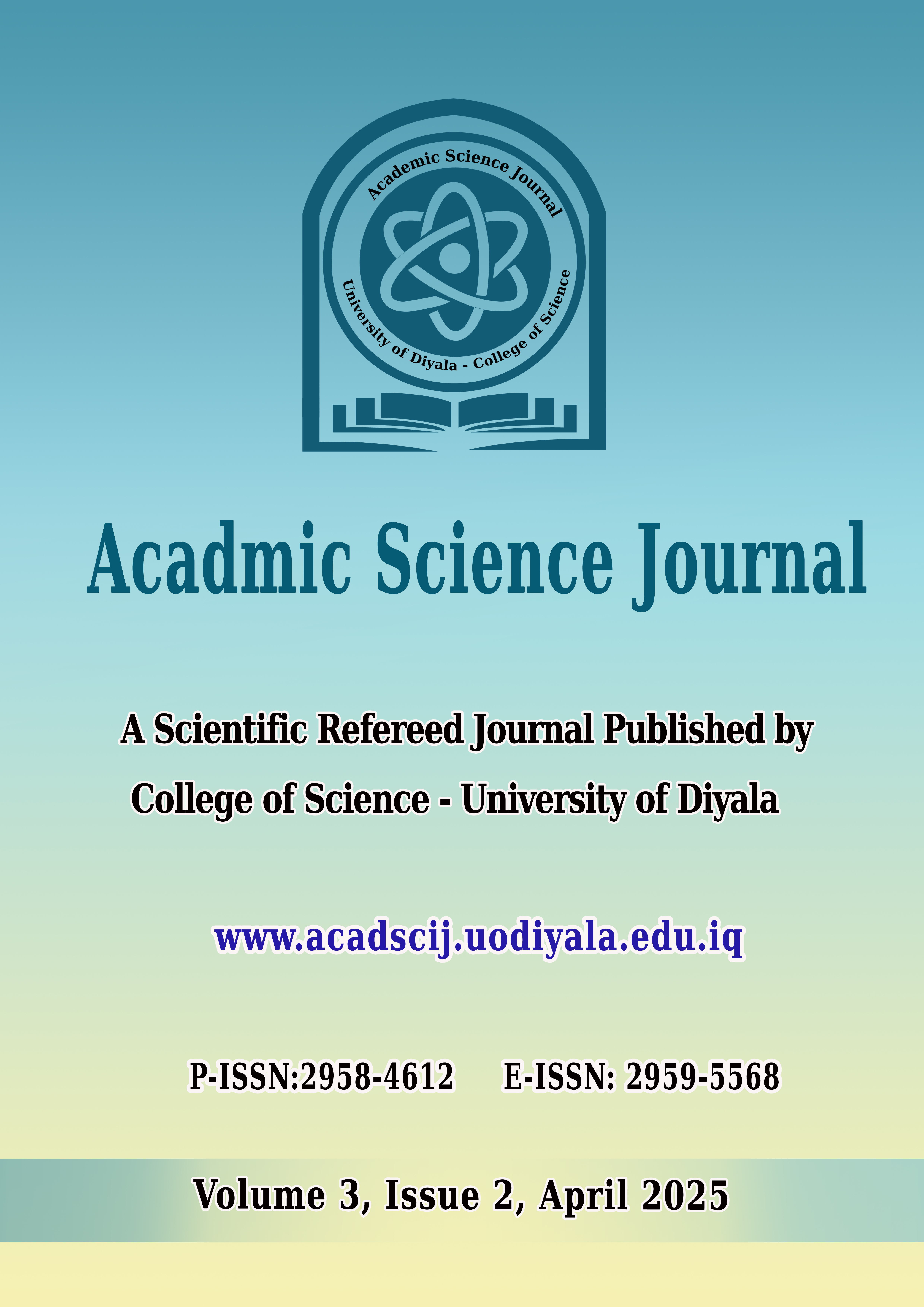Biochemical and Microbiological Analysis of Urine and Blood in Femaleswith Urinary Tract Infection in Waist Province
DOI:
https://doi.org/10.24237/ASJ.03.02.856CKeywords:
Urine analysis, Urinary tract infection, bacteriuria, urea, antibiotic sensitivitAbstract
Between January 2023 and April 2023, 150 female patients with urinary tract infection were enrolled in the study at AL-Suwaira General Hospital. Two sets of patients were created: fifty patients had Proteus urinary tract infection, and twenty-five patients did not have Proteus urinary tract infection. The results of a blood test and a urine analysis were examined in these two groups. Using the disk diffusion test, the isolates' pattern of antibiotic sensitivity was also established. According to our findings, the Proteus patients had proteinuria, cloudy urine, and a positive nitrite test result. Patients with Proteus frequently had urine specific gravity (p≤0.05), proteinuria, and cloudy urine, while non-Proteus patients frequently had these symptoms as well. Blood test findings did not significantly differ between Proteus and non-Proteus patients. Proteus species were the most sensitive isolate, whereas Neisseria species were the least sensitive. Levofloxacin is the most effective antibiotic, and it exhibits resistance to Pencillin but limited sensitivity to Nalidixic acid. For both Proteus and non-Proteus urinary tract infection, an early etiological identification is essential in order to promptly administer the proper empirical antibiotic treatment. This is crucial for preventing long-term treatment, complications, irreversible kidney damage, and the severity and chronicity of the disease. These clinical and test results can help us diagnose urinary tract infection at an early stage before urine cultures reveal the causing agents, which may require several days for therapy.
Downloads
References
S. Ullah, IA. Chaudhary, R. Masood, A comparison of open vesicolithotomy and cystolithotomy, Pak J Med Sci. ,23(1),45-50 (2007).
ED. Eads, KA. Herbst, J. Lee. Diagnosis and treatment of urolithiasis, Adv. Emerg. Nurs. J., 29(2),98-110(2007).
KK. Stamatelou, ME. Francis, CA.Jones, Jr LM. Nyberg, GC. Curhan , Time trends in reported prevalence of kidney stones in the United States: 1976–1994,Kidney int.,63(5),1817-23(2003).
J, Prywer ,M. Olszynski , Bacterially induced formation of infectious urinary stones: recent developments and future challenges. Curr. Med. Chem.,24(3),292-311(2017).
C.Y. Hsu, H.C. Fang, K.J. Chou, C.L. Chen, P.T. Lee, H.M. Chung, The clinical impact of bacteremia in complicated acute pyelonephritis, Am J Med Sci, 332, p. 175-180 (2006).
SA. Berger, Proteus bacteraemia in a general hospital 1972–1982, J. Hosp. Infect.,6(3),293-8 (1985).
K. Sakhaee , Recent advances in the pathophysiology of nephrolithiasis, Kidney int., ,75(6),585-95(2009).
B. Jellheden, RS. Norrby, T. Sandberg ,Symptomatic urinary tract infection in women in primary health care: bacteriological, clinical and diagnostic aspects in relation to host response to infection , Scand. j. prim. health care,14K.(2),122-8(1996).
CY. Chen, YH. Chen, PL. Lu, WR .Lin, TC. Chen, Proteus mirabilis urinary tract infection and bacteremia: risk factors, clinical presentation, and outcomes, J.Micro., Immun. Inf., ,45(3),228-36(2012).
TL. Griebling , Re: Risk Factors of All-Cause In-Hospital Mortality Among Korean Elderly Bacteremic Urinary Tract Infection (UTI) Patients, J. Urol., 6(187),2121-2 (2012).
EY. Garoy, YB. Gebreab, OO. Achila, DG.Tekeste, R. Kesete, R. Ghirmay, R. Kiflay ,T. Tesfu ,Methicillin-resistant Staphylococcus aureus (MRSA): prevalence and antimicrobial sensitivity pattern among patients—a multicenter study in Asmara, Eritrea, Can. J. Infect. Dis. Med. Microbiol., 2019 (2019).
L. Leibovici, S. Greenshtain, O. Cohen, AJ. Wysenbeek , Toward improved empiric management of moderate to severe urinary tract infections. Arch. Int. med.,152(12),2481-6(1992).
CY. Hsu , HC. Fang, KJ. Chou , CL. Chen,PT. Lee, HM. Chung , The clinical impact of bacteremia in complicated acute pyelonephritis. Am. J. Med. Sci., 332(4), 175-80(2006).
A. Silva, E. Costa, A. Freitas,A. Almeida , Revisiting the frequency and antimicrobial resistance patterns of bacteria implicated in community urinary tract infections. Anti.,11(6):768(2022).
C. Cashy A. De Leon, J. Anderson , T. Boes , Fusobacterium: A Rare Case of Septicemia in a Patient with Multiple Abscesses. Ohio Chapter/Air Force Chapters,(2020) ,P 26.
R. Davies, A. Wales , Antimicrobial resistance on farms: a review including biosecurity and the potential role of disinfectants in resistance selection. Comp. Rev. food sci. food saf.,18(3),753-74(2019).
AD. Batista, A. Rodrigues, A. Figueiras, M. Zapata-Cachafeiro, F. Roque, MT. Herdeiro, Antibiotic dispensation without a prescription worldwide: a systematic review. Anti., 9(11),786(2020).
Downloads
Published
Issue
Section
License
Copyright (c) 2025 CC BY 4.0

This work is licensed under a Creative Commons Attribution 4.0 International License.





